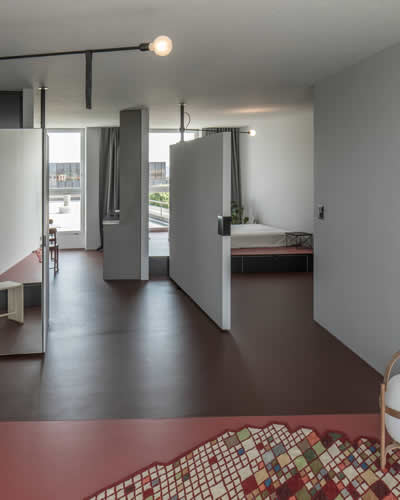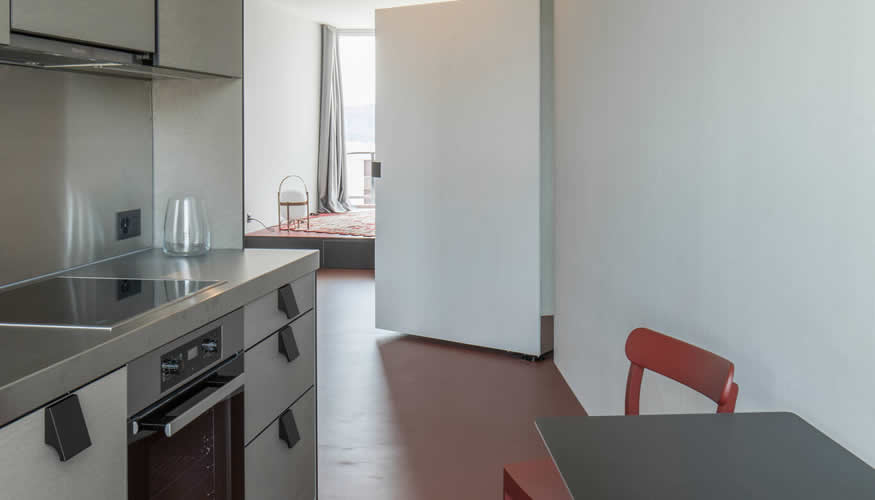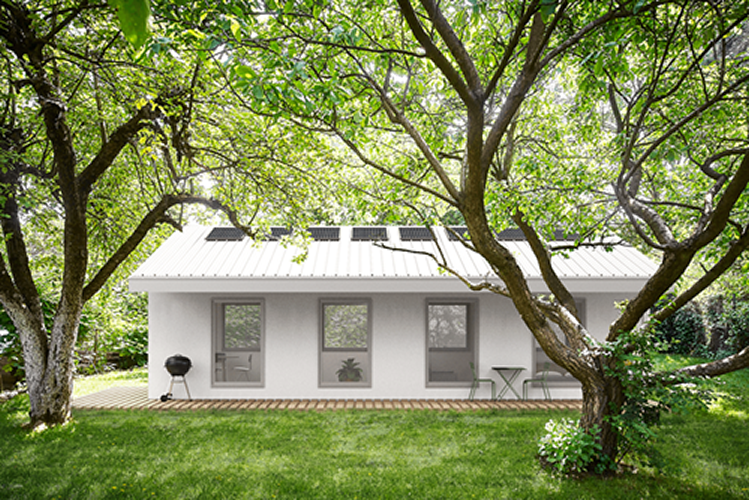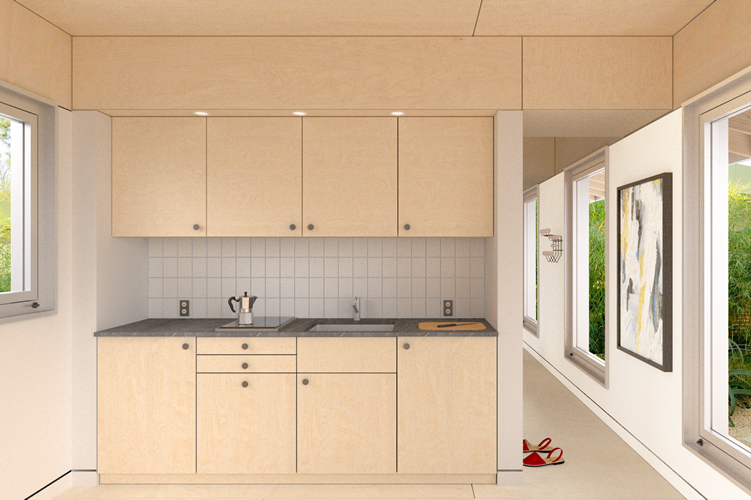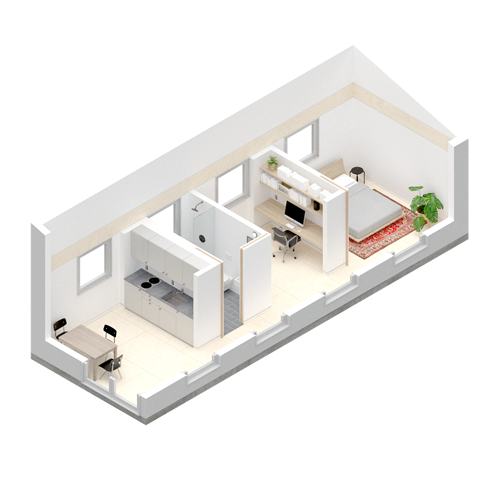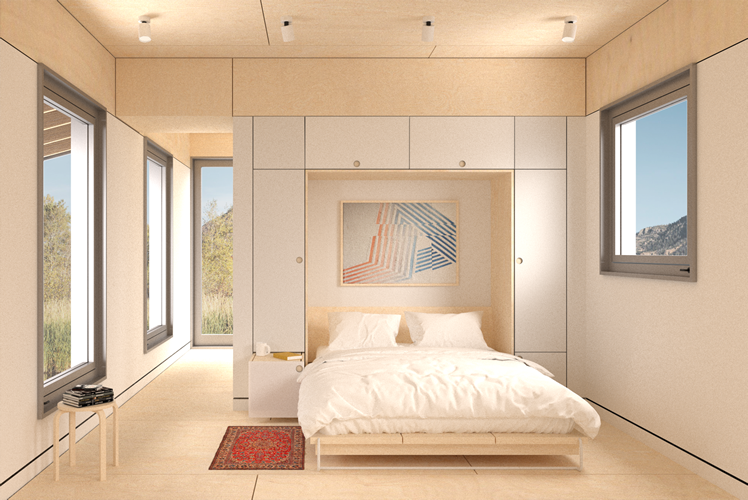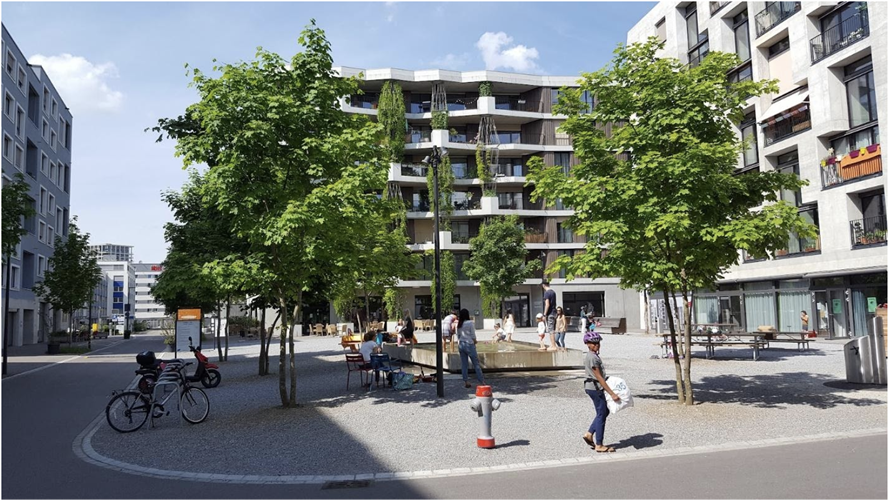Winning Essays
Winners of the twenty-fourth annual Berkeley Prize Essay Competition and Community Service Fellowship Competition are announced by University of California, Berkeley Professor Emeritus of Architecture and City & Regional Planning Raymond Lifchez, Chair of the international Berkeley Undergraduate Prize for Architectural Design Excellence.
The 2022 Berkeley Prize focuses on the topic: DESIGN GUIDED BY CLIENTS’ NEEDS: Applying Social Factors Research to Architecture. This year's Question recommends, but does not require that the undergraduate architecture students team with a full-time undergraduate social sciences student at their college or university or equally-accredited college or university in their local community in which they reside.
118 Essay Competition proposals of 500 words each, written by 142 undergraduate students collaborating in one and two-person teams from 22 countries were received in response to this year’s Question.
First Place Prize (Two-person team)
Ayesha de Sousa studying in the Bachelor of Architecture program at the Goa College of Architecture, Goa, India; and Andrew de Sousa studying in the Bachelor of Arts program in Economics at St. Xavier’s College, Mumbai, India for: “Backwater Rising” (10,000USD for the team).
Read Bio | Read Proposal | Read Essay
Second Place Prize
Beatriz de Costa Gotoda studying in the Bachelor of Architecture and Urban Planning program in the Faculty of Architecture and Urban Planning at the University of São Paulo, Brazil for: "From occupation to community: a participatory project at the edge of the metropolis” (6500USD).
Read Bio | Read Proposal | Read Essay
Third Place Prize #1 (Two-person team)
Mahmoud El Kady studying in the Bachelor of Science in Architectural Engineering program in the School of Sciences and Engineering; and Tia Ashraf Aziz, studying anthropology, both at the American University in Cairo, Egypt for: “Economic Architectonics: Local Initiatives for Live/Work Housing"
Read Bio | Read Proposal | Read Essay
Third Place Prize #2 (Two-person team)
The team of Victoria Masagbor studying in the Bachelor of Architecture program in the Department of Architecture of the Faculty of Environmental Sciences at the University of Benin, Lagos, Nigeria; and Elizabeth Masagbor studying Classics in the Bachelor of Arts program in the Faculty of Arts at the University of Ibadan, Ibadan, Nigeria for: "Meeting the People's Needs Through Research” (5500USD for the team).
Read Bio | Read Proposal | Read Essay
Fourth Place Prize (Two-person team)
Samriddhi Khare studying in the Bachelor of Architecture program in the School of Architecture and Planning at Visvesvaraya National Institute of Technology, Nagpur, India; and Jiya Anand a Bachelor of Arts in Psychology Honors student at Kamala Nehru College, New Delhi, India for: "New Delhi and the Planning of Carcerality” (4000USD for the team).
Read Bio | Read Proposal | Read Essay
Honorable Mention
Oprah Omeka studying in the Bachelor of Architectural Technology program at Jomo Kenyatta University of Agriculture and Technology, Nairobi, Kenya for: “Communal Harmony in Architectural Design” (1500USD).
Read Bio | Read Proposal | Read Essay
Honorable Mention (Two-person team)
Dhruv Bhatia studying in the Bachelor of Architecture program in the Department of Architecture and Planning at the School of Planning and Architecture, Bhopal, India; and Srishti Grover, a Bachelor of Arts in Economics Honors student at the Sri Guru Gobind Singh College of Commerce, University of Delhi, New Delhi, India for “Quilting The Crevices: Restructuring Lives Through Architecture” (1500USD for the team).
Read Bio | Read Proposal | Read Essay
Honorable Mention (Two-person team)
Yuqi Shao studying in the Bachelor of Architecture program at the Illinois Institute of Technology, Chicago, U.S.A.; and Rongzhi Hu, studying for an AB degree in History at Vassar College, Poughkeepsie, New York, U.S.A. for: “Small, High-Quality, and Church-Centered Housing Development in Chicago” (1500USD for the team).
Read Bio | Read Proposal | Read Essay
|
|
|
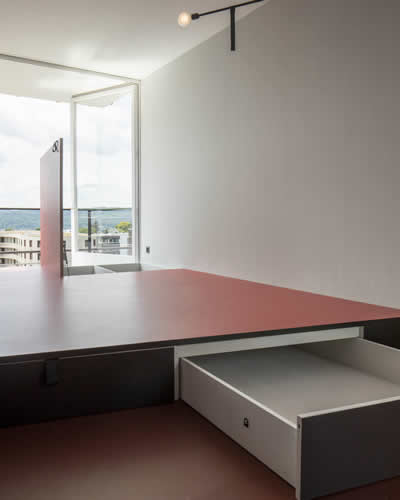 Elli Mosayebi, Edelaar Mosayebi Inderbitzin Architects (BP2022 Juror): vacancy – no vacancy project. "The two built-in platforms contain numerous storage compartments for personal belongings." (See Essay Question: Introductions by jurors.)
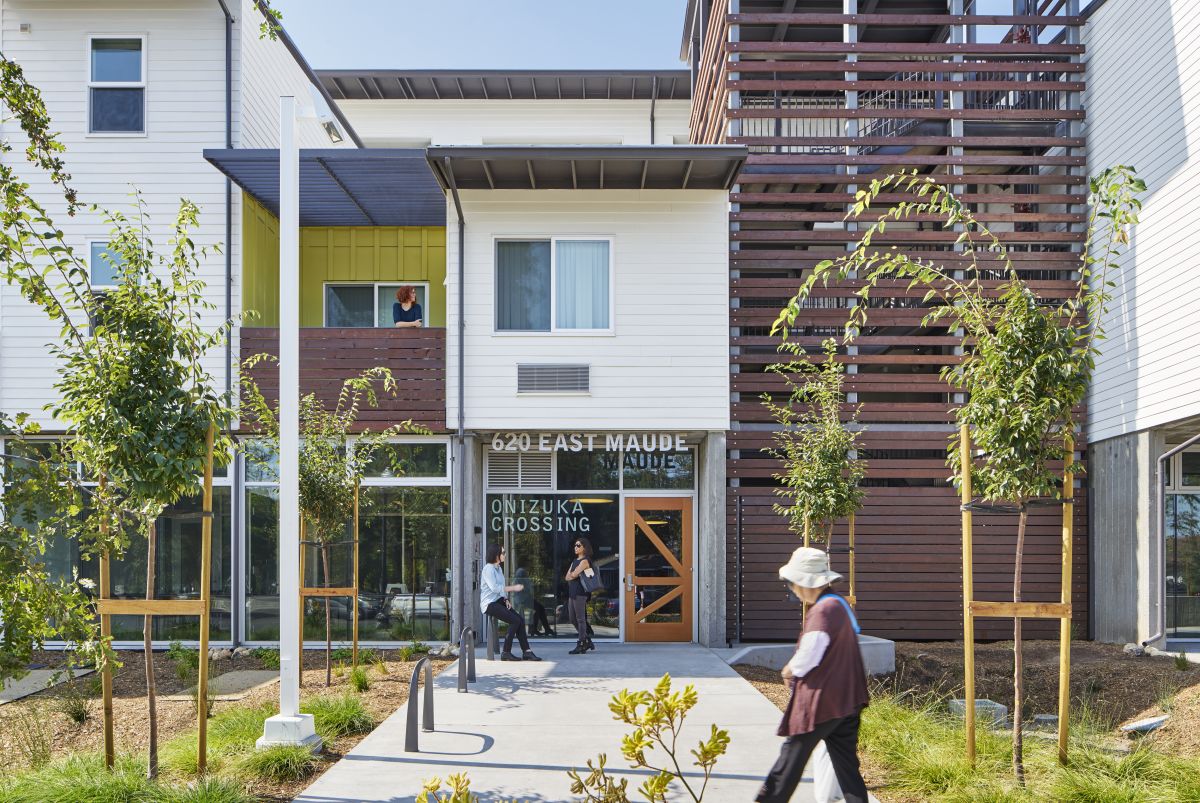 Onizuka Crossing Housing, David Baker Architects, San Francisco, 2016. The result of a partnership between MidPen Housing and the City of Sunnyvale, California, U.S.A., Onizuka Crossing provides 58 low-income working families with new, affordable rental homes in Sunnyvale, the heart of the Silicon Valley. Twenty-nine units are reserved for formerly homeless individuals and their families. (See: https://www.dbarchitect.com/project_detail/178/Onizuka%20Crossing%20Family%20Housing.html) Photo credit: ©Bruce Damonte.from DBArchitect.com.
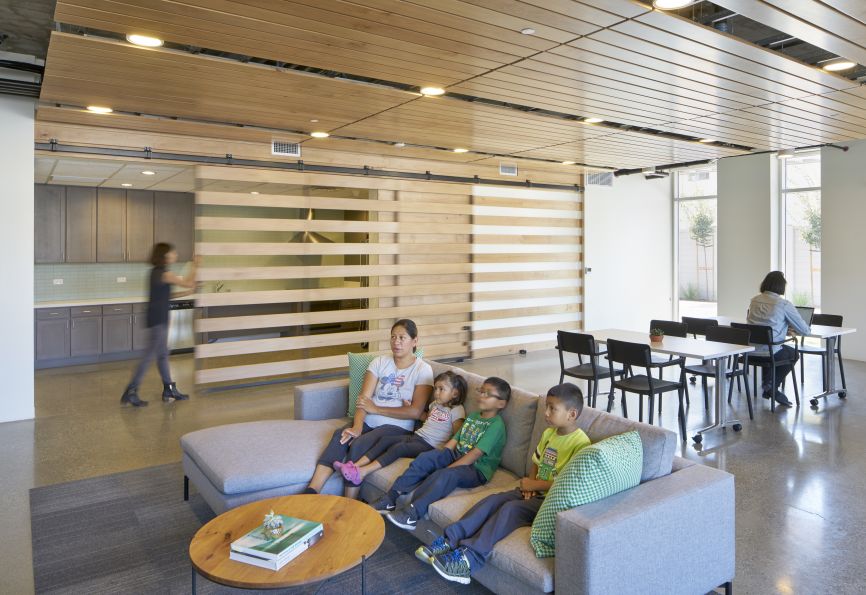 Onizuka Crossing Housing, David Baker Architects, 2016. "Former homeless residents receive extensive supportive services in collaboration with the Santa Clara County Department of Behavioral Health and the U.S. Veterans Administration Palo Alto Healthcare System... Onizuka Crossing is a prime example of infill development, transforming a U.S. National Guard armory building into supportive, permanent affordable housing." (See: https://www.dbarchitect.com/project_detail/178/Onizuka%20Crossing%20Family%20Housing.html) Photo credit: ©Bruce Damonte from DBArchitect.com.
 S. Tetteh + Associates Architects, Accra, Ghana. Low-cost housing project for rangers and conservation staff at the Bia and Ankasa Reserves, Juabeso-Bia district, southwest Ghana.
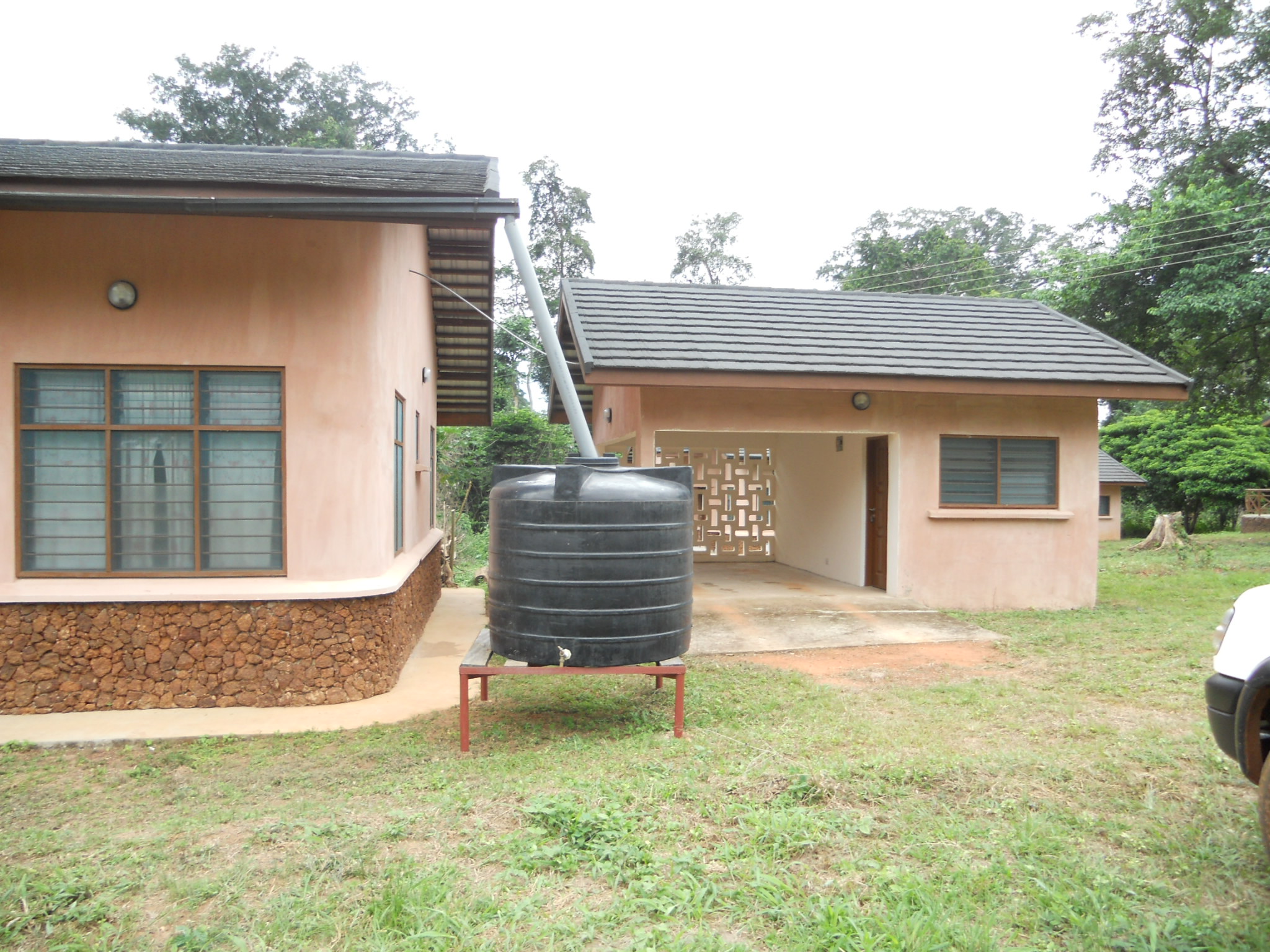 S. Tetteh + Associates Architects, Accra, Ghana. Low-cost housing project for rangers and conservation staff at the Bia and Ankasa Reserves, Juabeso-Bia district, southwest Ghana. 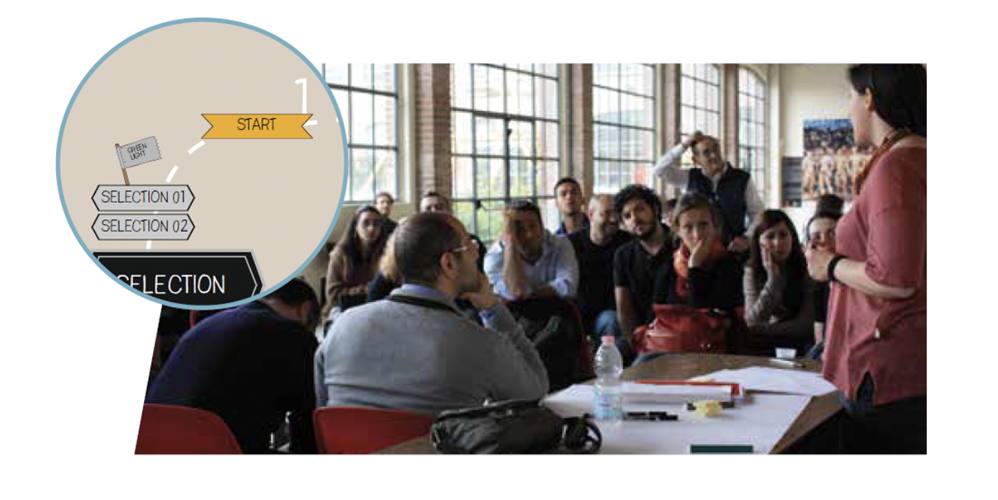 Fondazione Housing Sociale, Milan, Italy: The Housing Foundation developed a class to help future residents form a collaborative community in their housing development. Research by Dorit Fromm, Writer, Architect, BP2022 Juror: (See Essay Question: Introductions by jurors.)
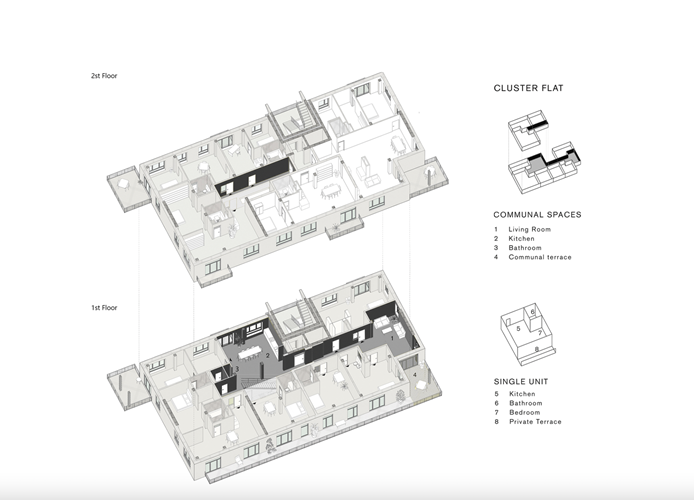 From the manual "Starting Up Communities, A Design Kit for Collaborative Housing," Fondazione Housing Sociale, Milan, Italy. Research by Dorit Fromm, Author, Architect, BP2022 Juror: (See Essay Question: Introductions by jurors.)
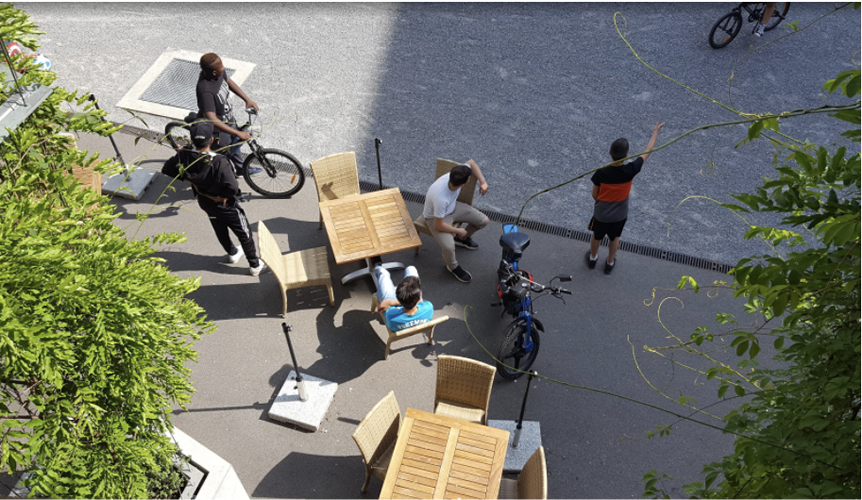 Mehr als Wohnen, Switzerland: Childcare and afterschool care are located on the ground floor level of the housing, as well as a café and other neighborhood services. Research by Dorit Fromm, Author, Architect, BP2022 Juror: (See Essay Question: Introductions by jurors.)
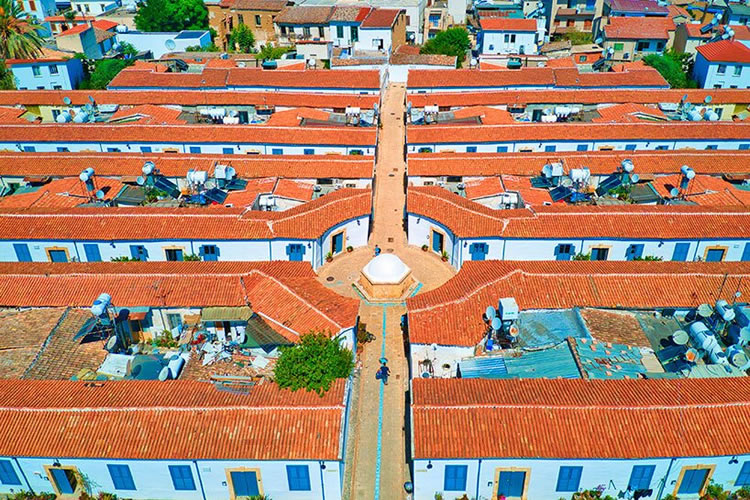 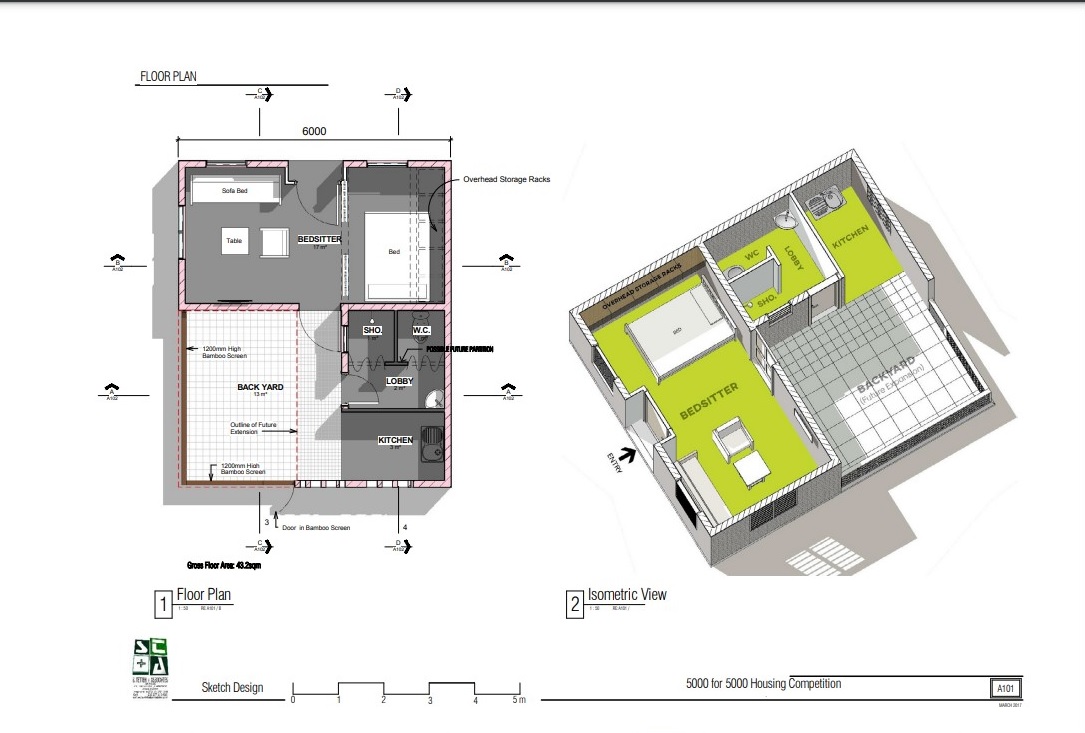 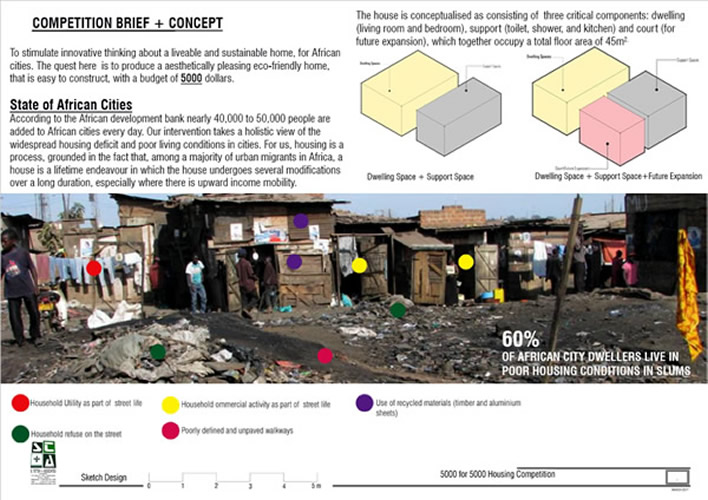 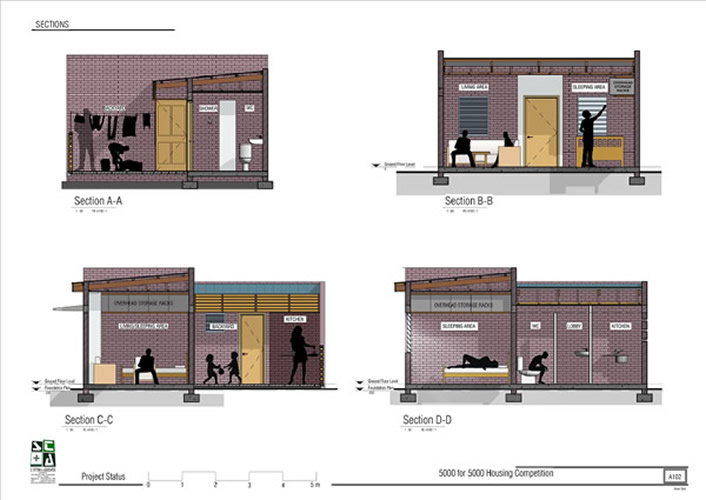 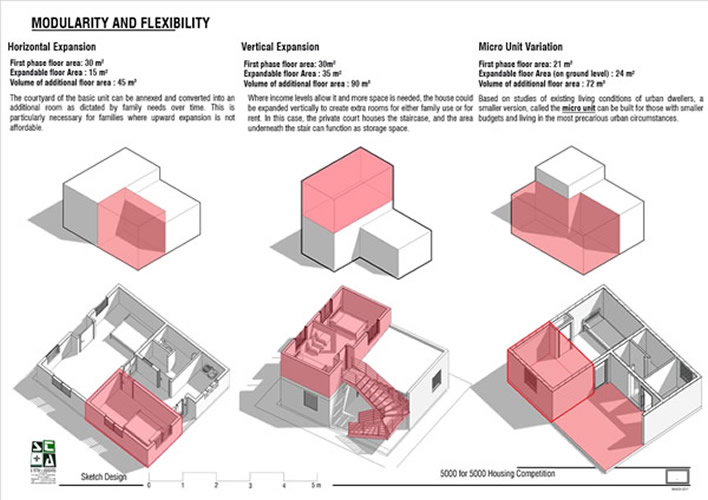 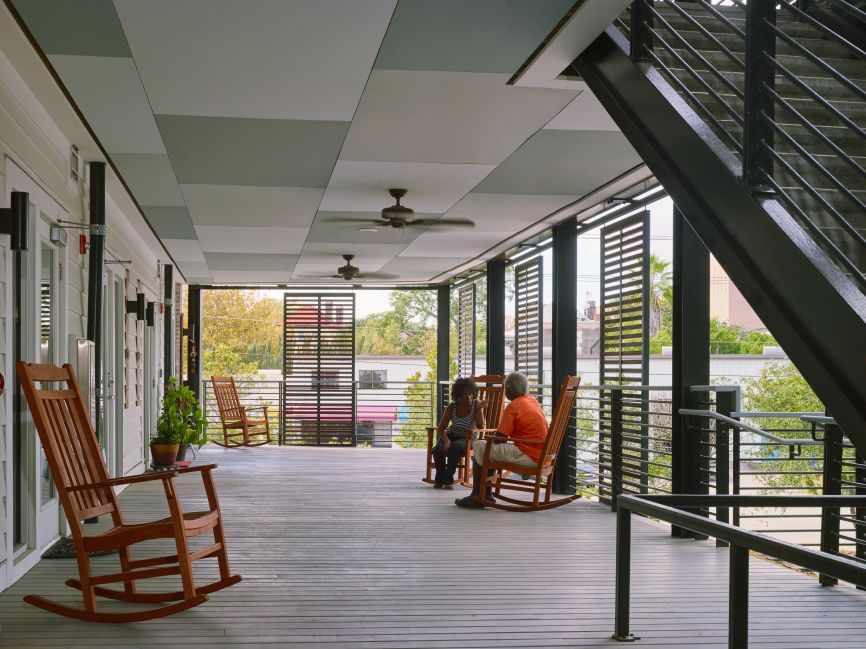 Williams Terrace, Charleston, South Carolina, U.S.A., Architect of Record, McMillan Pazdan Smith Architecture, Spartanburg, South Carolina, U.S.A. /Design Architect, David Baker Architect, San Francisco, California, U.S.A., 2017. "Williams Terrace won the 2019 American Institute of Architects/Housing and Urban Development Secretary's Housing and Community Design Award for Excellence in Affordable Housing Design. This singular nation-wide award recognizes architecture that demonstrates overall excellence in terms of design in response to both the needs and constraints of affordable housing... Wide porches that double as circulation offer places to sit, meet in passing, and personalize a bit of outdoor space." (See: https://www.dbarchitect.com/project_detail/176/Williams%20Terrace%20.html) Photo credit: Chris Luker from DBArchitect.com.
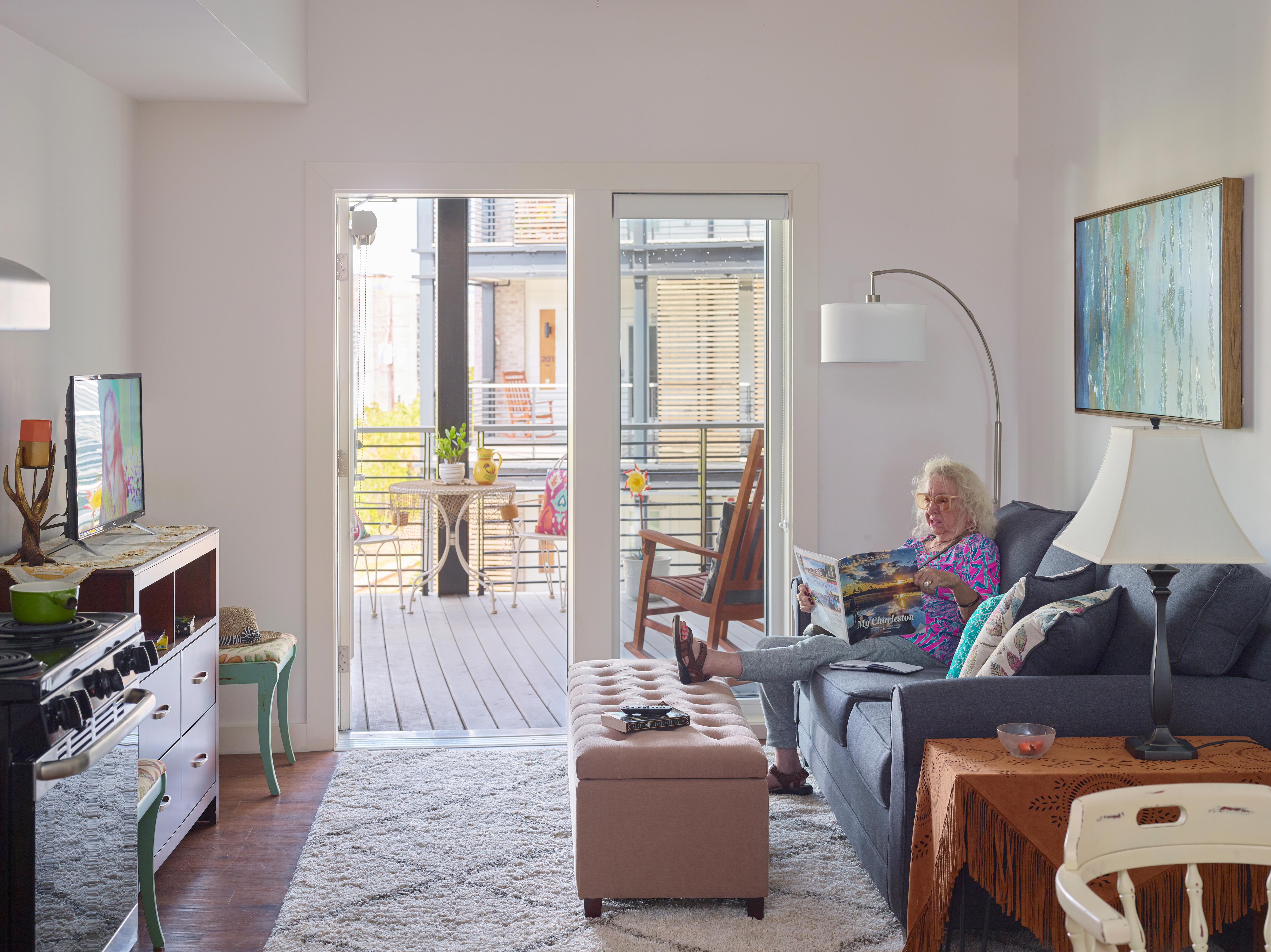 Williams Terrace, Charleston, South Carolina, U.S.A., Architect of Record, McMillan Pazdan Smith Architecture, Spartanburg, South Carolina, U.S.A. /Design Architect, David Baker Architect, San Francisco, California, U.S.A., 2017. "The design team worked closely with the Housing Authority of the City of Charleston to create a dynamic building that meets the challenges of the site—located in a high-velocity flood zone—and respects the gracious built fabric of downtown historic Charleston... Apartments connect to the wide circulation porches, which have room for some personal touches." (See: https://www.dbarchitect.com/project_detail/176/Williams%20Terrace%20.html) Photo credit: Chris Luker from DBArchitect.com.
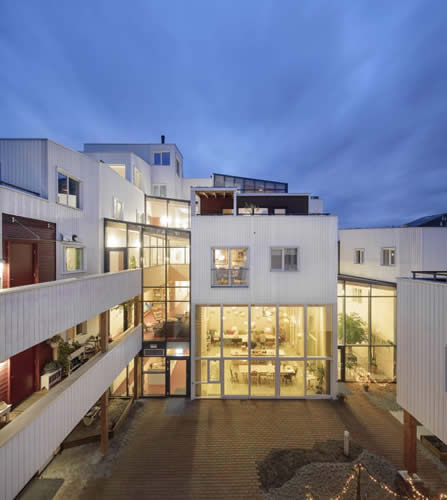 Vindmøllebakken, 40-unit cohousing project, Stavanger, Norway, 2019. Designed by founding architects Siv Helene Stangeland and Reinhard Kropf of Norwegian firm Helen & Hard. The architects now live in Vindmøllebakken. Photo credit: Minna Soujoki Langbord/Courtesy of Helen & Hard via Editon.CNN.com
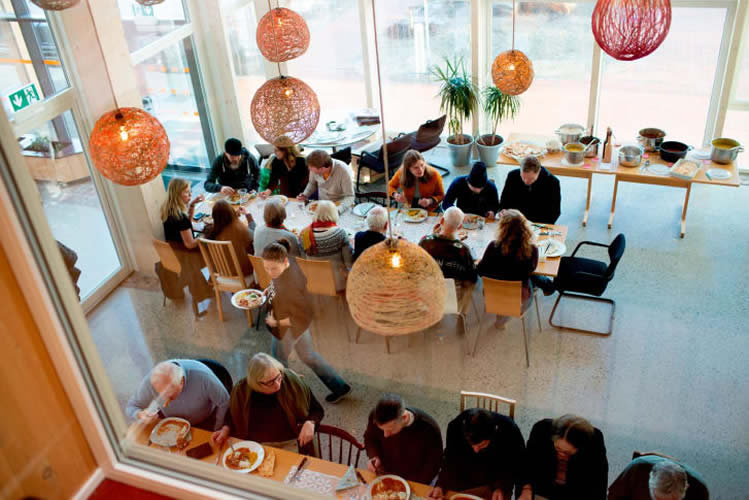 Vindmøllebakken, 40-unit cohousing project, Stavanger, Norway, 2019. In addition to Vindmøllebakken (see previous slide), Helen & Hard are reported to having five other cohousing projects in the works. Photo credit: Sindre Ellingsen/Courtesy of Helen & Hard via Edition.CNN.com
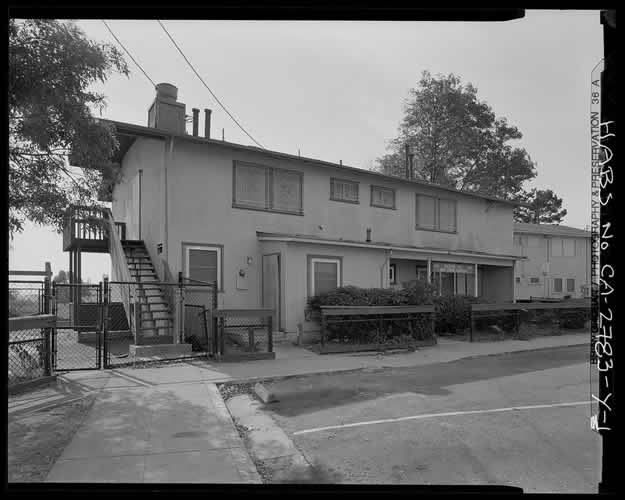 Easter Hill Village, Richmond, U.S.A., 1954. Demolished, 2004. "It was the most significant public effort to provide affordable permanent housing for many families displaced by demolition of temporary World War II housing. It was the first multi-unit residential development to combine the twin themes of the planned unit development with the individuation of units... and the care given to integrating a multi-unit residential development to its site." Historic American Buildings Survey, Library of Congress, U.S.A. (See: https://www.loc.gov/item/ca3350/)
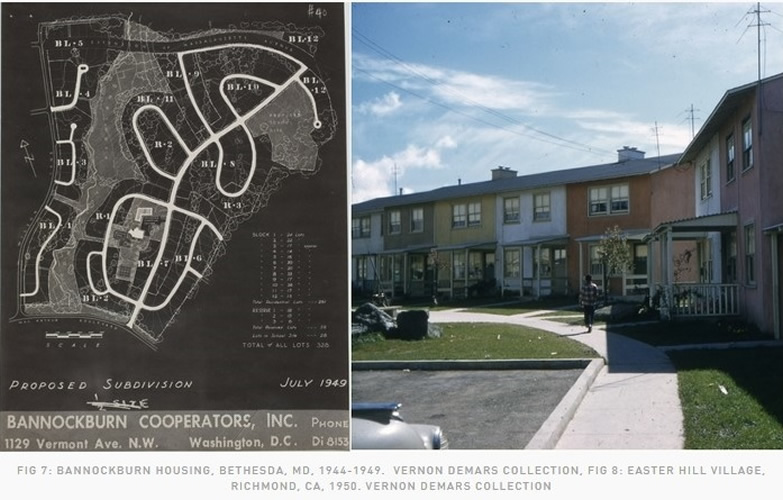 Richmond Village (formerly Easter Hill Village - see previous slide), California, U.S.A., 2008. "The goal for the …Richmond Village project was to turn 300 units of crime-ridden, run-down public housing into a vital neighborhood anchored by a community center and public open space. The development was originally built in 1954 and was a model of public housing until neglect, crime and poverty took over. The Richmond Housing Authority together with Richmond Village…residents collaborated to re-construct a vision of community. The vision included open/community space with mixed-income housing; 100% of the rental housing is affordable, with 70% allocated for public housing residents. The for-sale family homes have a mix of low, moderate and market-rate housing." (See: https://www.nibbi.com/projects/richmond-village/)
|
|

